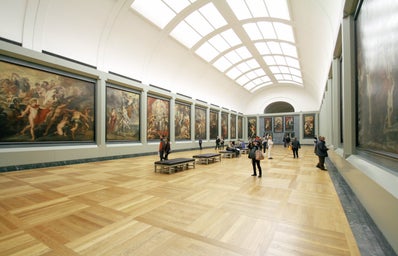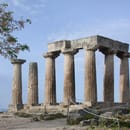Above my desk rests a soothing scene: van Gogh’s “The Starry Night.” Between study sessions I find myself admiring his swirling summer night sky. Intricate lines comprising the prominent center swirl eventually carry my gaze downwards. Below a glaring crescent moon sits a quaint town. Pops of brilliant yellow, mimicking the crescent above, pour through home windows. A lone steeple stretches upwards from the town’s center. To the left lies a tenebrous figure, tree-like, stiffly curving upwards. Stepping farther from the scene, away from the details, allows me to contemplate the piece as a whole. From afar the scene becomes grotesque. The stars are gaping in a sky teeming with life as the ominous left hand figure looms over the town. Mesmerized by such eerie beauty I took it upon myself to learn more.
After poring through online galleries and articles I found that Van Gogh painted The Starry Night, in June of 1889, while hospitalized at an asylum near Saint-Rémy. Earlier in 1888 after a violent dispute in Arles with fellow painter Paul Gauguin van Gogh is said to have cut off part of his left ear. In May 1889 he admitted himself to the asylum. According to the Amsterdam Van Gogh Museum’s online timeline he remarked upon his entrance: “I wish to remain shut up as much for my own peace of mind as for other people’s,” (Van Gogh’s Life, n.d., para. 1). It seems that he found solace in the asylum’s confines.
Curious about his illness, I read The Van Gogh Gallery ‘s page detailing his condition. It is thought that van Gogh suffered from temporal lobe epilepsy. His fondness for Absinthe, a popular alcoholic beverage in France amongst artists and writers circa the late 1800s and early 1900s, is thought to have aggravated a brain lesion he developed at birth. One doctor prescribed a drug with a particular side effect: “This prescription drug can cause one to see in yellow or see yellow spots,” (Templeton Reid, LCC, 2013). This could explain for The Starry Night’s dramatically illuminated stars and moon. Although subjected to uncontrollable attacks brought on by his illness Van Gogh crafted 150 paintings during his time at Saint-Rémy (Van Gogh’s Life, n.d., para 2).
I also found that van Gogh previously wanted to minister to the poverty stricken. Some of his works depict Christian religious allusions, such as the steeple in “The Starry Night.” The Van Gogh Gallery site adds that the total eleven stars depicted in the photo could be an allusion to Genesis 37:9, (Templeton, Reid, LCC, 2013). In other famous works such as The Potato Eaters, he features the rugged reality of peasant life.
Van Gogh died July of 1890, having only painted The Starry Night a little over a year before. In The Starry Night van Gogh brilliantly upsets the bounds between beauty and grotesque. And this is what makes it enticing.”


